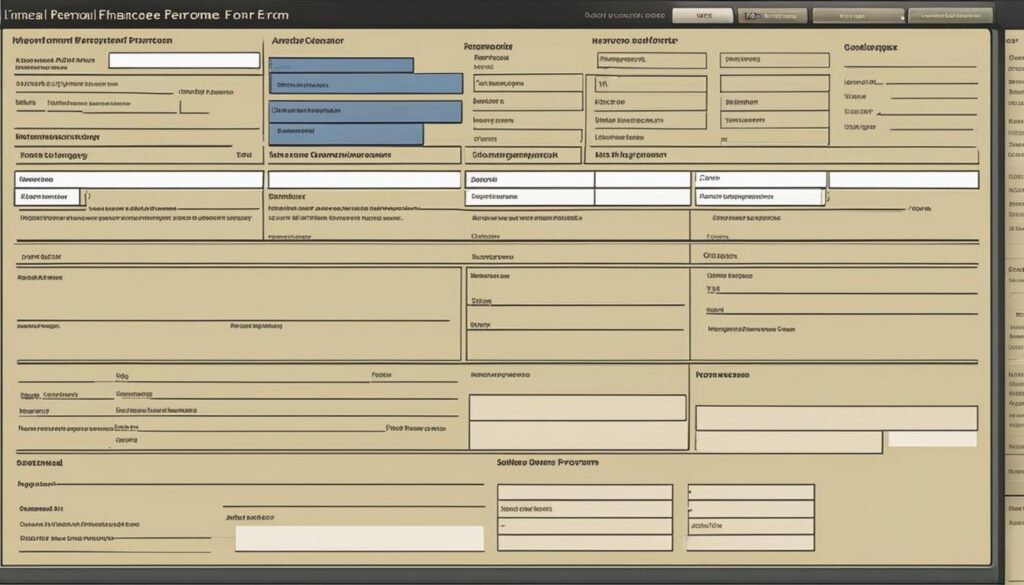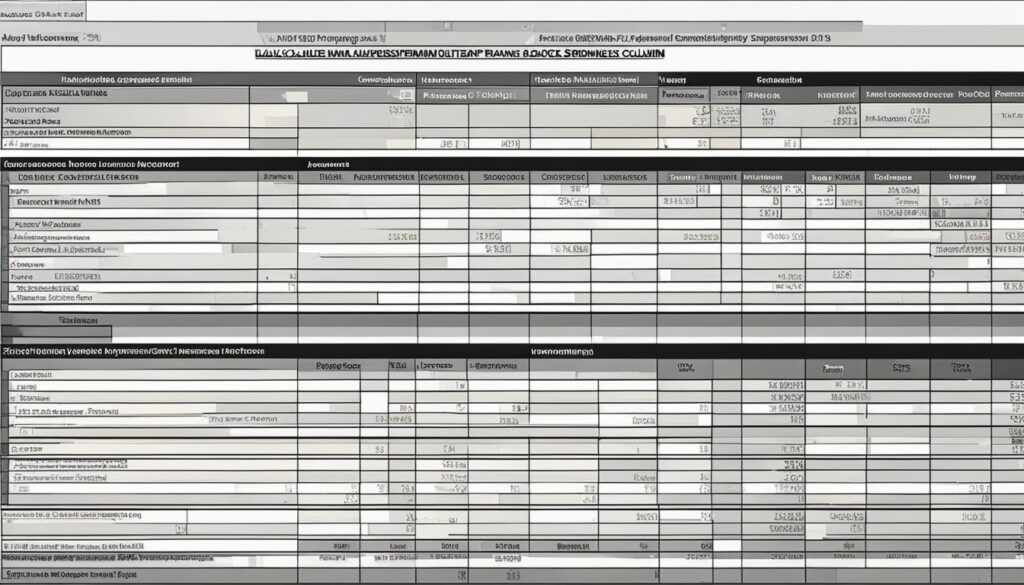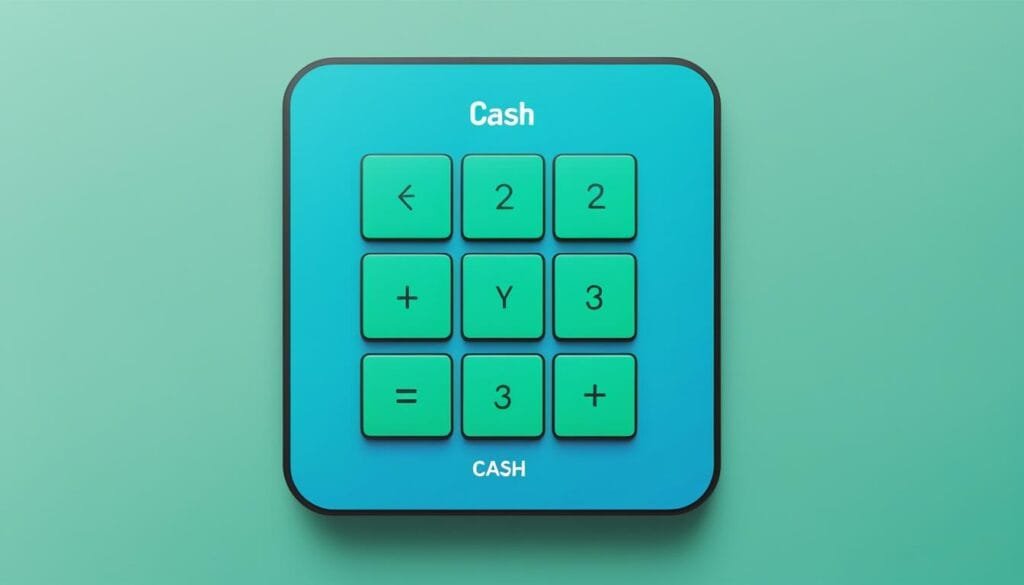The Allocated Spending Plan Form is an invaluable tool for effectively managing and tracking your budget. Whether you are looking to save for a specific goal, pay off debt, or simply gain better control over your finances, this personal finance form can help you achieve your financial objectives. By using the Allocated Spending Plan Form, you can allocate your income into different spending categories on a pay period basis, allowing you to plan and track your expenses with ease. With every dollar accounted for, you can make informed financial decisions and ensure that your money works for you.
With the Allocated Spending Plan Form, you can take control of your finances and achieve your financial goals. Plan your expenses, track your spending, and make adjustments as needed to stay on track. Whether you are new to budgeting or a seasoned pro, this budgeting form can provide the framework you need to achieve financial success.
Key Takeaways:
- The Allocated Spending Plan Form is a valuable tool for managing your budget effectively.
- By using this form, you can allocate your income into different spending categories.
- The form allows you to plan and track your expenses with every dollar accounted for.
- By making informed financial decisions, you can achieve your financial goals.
- The Allocated Spending Plan Form is suitable for both beginners and experienced budgeters.
How to Use the Allocated Spending Plan Form
Once you have the Allocated Spending Plan Form in hand, follow these steps to effectively manage your budget:
- Fill in the Pay Period Dates and Income: Start by entering the dates of your pay period and the amount of income you’ll receive during that time. This will help establish the timeframe and financial resources you have to work with.
- Plan Your Expenses: Next, allocate your income into different spending categories listed on the form. These categories may include housing, transportation, food, debt, and more. Consider your financial priorities and allocate funds accordingly.
- Use the Remaining Column: The Allocated Spending Plan Form features a “Remaining” column that helps you keep track of how much money you have left for that pay period. Adjust your allocations until the remaining column hits zero, ensuring that every dollar is assigned a purpose.
- Make Adjustments as Needed: If you find that you have money left over after allocating all your expenses, consider adjusting an area such as savings or charitable giving. This allows you to optimize your budget and make the most of your financial resources.
By following these steps and utilizing the Allocated Spending Plan Form, you can gain control over your budget and make informed decisions about your money.
“The Allocated Spending Plan Form provides a structured approach to budgeting. By allocating your income into different categories and tracking your expenses, you can ensure that your spending aligns with your financial goals.” – Financial Expert
Benefits of Using the Allocated Spending Plan Form
The Allocated Spending Plan Form offers several benefits that can help improve your financial management. Firstly, it encourages you to prioritize your expenses and give every dollar a name, ensuring that you’re intentional with your spending. By assigning specific amounts to each spending category, you can allocate your income effectively and make informed financial decisions.
An important advantage of using the Allocated Spending Plan Form is that it provides a clear overview of your budget. With this form, you can easily see how much money you’ve allocated to different expense categories, such as housing, transportation, food, and debt. This visual representation helps you understand where your money is going and makes it easier to track your expenses.
Tracking expenses is another key benefit of using the Allocated Spending Plan Form. By recording your actual expenses in each category, you can compare them to your planned allocations. This helps you identify areas where you may be overspending and allows you to make adjustments accordingly. By keeping careful track of your expenses, you can ensure that you stay within your allocated budget and avoid unnecessary financial stress.
“The Allocated Spending Plan Form helps you prioritize your expenses, visualize your budget, and track your expenses effectively. By using this form, you can take control of your finances and make informed financial decisions.”
Here are the benefits of using the Allocated Spending Plan Form:
- Prioritize your expenses and give every dollar a name
- Get a clear overview of your budget
- Track your expenses and compare them to your allocations
- Identify areas where you may be overspending
- Make informed financial decisions and take control of your finances
The Allocated Spending Plan Form empowers you to better manage your money and achieve your financial goals. By utilizing this form as a tool for budgeting and expense tracking, you can gain better control over your finances, reduce stress, and make your money work for you.
Tips for Using the Allocated Spending Plan Form Effectively
To make the most out of the Allocated Spending Plan Form, follow these helpful tips:
- Be thorough and realistic when planning your expenses, considering both fixed and variable costs. This will ensure that your budget accurately reflects your financial situation.
- Regularly review and adjust your allocations to accommodate any changes in your income or spending patterns. This will help you stay on track with your budget.
- Use the Allocated Spending Plan Form as a tool for financial accountability and discipline. Stick to your budget and resist the temptation to overspend in any category.
- Track your actual spending and compare it to your planned allocations. This will help you identify areas where adjustments may be needed to better align with your financial goals.
By implementing these tips, you can effectively manage your budget using the Allocated Spending Plan Form, ensuring that you are in control of your finances.
“The key to successful budgeting lies in being diligent, adaptable, and committed to your financial goals.” – Financial Expert
Other Useful Financial Planning Forms
In addition to the Allocated Spending Plan Form, there are other useful financial planning forms that can aid in your budgeting efforts. These forms include the Monthly Cash Flow form, Net Worth form, Non-Monthly Expense form, and more. Each form serves a specific purpose in helping you manage different aspects of your finances, such as tracking your income and expenses, calculating your net worth, and planning for non-monthly expenses. By utilizing these forms, you can create a comprehensive and well-rounded financial plan.
Below is a table that provides an overview of the different financial planning forms and their purposes:
| Financial Form | Purpose |
|---|---|
| Monthly Cash Flow Form | Track your monthly income and expenses to analyze your cash flow |
| Net Worth Form | Calculate your net worth by comparing your assets and liabilities |
| Non-Monthly Expense Form | Plan for expenses that occur irregularly, such as annual subscriptions or holiday gifts |
| Savings Goal Form | Set and track your savings goals to achieve financial milestones |
By utilizing these forms in conjunction with the Allocated Spending Plan Form, you can gain a holistic view of your financial situation and effectively manage your money.
Remember, these forms are meant to serve as tools for your financial planning and tracking. Adjust them to fit your specific needs and goals, and regularly review and update them as your financial situation changes.

Tailoring the Allocated Spending Plan Form to Your Needs
The Allocated Spending Plan Form is a versatile tool that can be customized to suit your specific financial requirements. By tailoring the form, you can align it with your priorities and make adjustments as your financial situation evolves.
One way to customize the form is by modifying the spending categories. You can add or remove categories to reflect your unique expenses. For example, if you have a significant healthcare expenditure, you can include a dedicated category for medical costs. By tailoring the form to your needs, you ensure that every aspect of your finances is accounted for.
Another aspect of customization is adapting the form to accommodate multiple sources of income or irregular paychecks. If you have a side business or freelancing income in addition to your primary job, you can incorporate a separate section in the form to track these earnings. This allows you to have a comprehensive view of your cash flow and better manage your finances.
Remember, the key to effective financial planning is personalization. The Allocated Spending Plan Form provides a flexible foundation that you can mold based on your unique financial circumstances.
Example:
Here is an example of how you can tailor the Allocated Spending Plan Form to your needs:
| Category | Planned Allocation | Actual Allocation | Remaining |
|---|---|---|---|
| Housing | $1,500 | $1,600 | $-100 |
| Transportation | $300 | $300 | $0 |
| Food | $400 | $450 | $-50 |
| Healthcare | $200 | $150 | $50 |
| Entertainment | $100 | $100 | $0 |
In this example, the person has adjusted the form to include a dedicated category for healthcare expenses. They have allocated $200 for healthcare but have only spent $150, resulting in $50 remaining. This customization allows them to keep track of their medical costs separately and ensures that they can monitor their spending efficiently.

Streamline Your Finances with Online Budgeting Tools
While the Allocated Spending Plan Form is a great tool for managing your budget on paper, there are also online budgeting tools available that can streamline the process further. These tools offer features such as automatic expense tracking, syncing with bank accounts, and generating reports to provide a comprehensive overview of your financial situation.
By using online budgeting tools, you can access your budget from anywhere, easily track your expenses, and gain valuable insights into your spending habits. These tools allow you to categorize your expenses, set spending limits, and receive reminders when bills are due. With a user-friendly interface and intuitive design, online budgeting tools make it simple and convenient to keep your finances organized.
Benefits of Online Budgeting Tools:
- Automatic Expense Tracking: Online budgeting tools can automatically track your expenses by linking to your bank accounts, credit cards, and other financial institutions. This eliminates the need for manual entry, saving you time and ensuring accuracy.
- Customizable Categories: These tools allow you to create personalized spending categories that align with your budgeting goals. You can easily modify and adjust the categories as your needs evolve.
- Real-Time Updates: With online budgeting tools, you can see your financial information in real-time. This allows you to stay informed about your current financial status and make adjustments as necessary.
- Goal Setting and Tracking: Many online budgeting tools provide goal-setting features, allowing you to set financial targets and track your progress towards achieving them. This can help motivate you to stick to your budget and reach your financial goals.
Whether you prefer a web-based platform or a mobile app, there are online budgeting tools available to suit your preferences. These tools offer a convenient and efficient way to manage your finances, providing you with the tools and insights you need to make informed financial decisions.
By combining the power of the Allocated Spending Plan Form with online budgeting tools, you can take control of your finances and achieve your financial goals with ease.
| Online Budgeting Tool | Features |
|---|---|
| Mint | Automatic expense tracking, bill reminders, goal setting, and budgeting categories |
| You Need a Budget (YNAB) | Real-time syncing, goal tracking, personalized budgeting categories, and financial education resources |
| PocketSmith | Forecasting, cash flow management, goal setting, and expense categorization |
The Importance of Regular Budget Reviews
Regularly reviewing your budget is essential for effective financial management. By consistently assessing your budget, you can identify areas of overspending and opportunities to save money. Additionally, budget reviews allow you to make necessary adjustments to accommodate changes in your income or expenses. By keeping your budget up to date, you can stay on track with your financial goals and ensure that your budget accurately reflects your current financial situation and priorities.
| Benefits of Budget Reviews | |
|---|---|
| 1 | Identify areas of overspending |
| 2 | Find opportunities for saving |
| 3 | Make necessary adjustments |
| 4 | Maintain alignment with financial goals |
| 5 | Ensure accuracy in budgeting |
During a budget review, carefully analyze your income and expenses to determine whether any adjustments need to be made. This includes assessing your spending patterns, evaluating your financial priorities, and considering any changes in your financial circumstances. With each review, you can fine-tune your budget to ensure that it continues to support your financial goals and align with your desired money management strategies.
“Regular budget reviews allow you to stay proactive and make informed financial decisions.”
Tips for Effective Budget Reviews
- Review your budget on a regular basis, such as monthly or biweekly, to ensure ongoing financial control.
- Compare your actual expenses to your budgeted amounts to identify any discrepancies.
- Consider using budgeting apps or software to streamline the budget review process.
- Seek the help of a financial advisor or planner for expert guidance and insights during your budget reviews.
By developing a habit of regular budget reviews, you can maintain a strong financial foundation and make necessary adjustments to ensure your budget remains effective and aligned with your financial goals.
Conclusion
The Allocated Spending Plan Form is an invaluable tool for effective budget management. By using this form, you can strategically allocate your income across various spending categories, carefully plan your expenses, and effortlessly track your budget. The flexibility of the form allows you to customize it according to your specific financial needs, ensuring that it aligns with your personal goals and priorities.
Enhance your budget management process even further by integrating online budgeting tools with the Allocated Spending Plan Form. These tools offer advanced features such as automatic expense tracking, integration with your bank accounts, and comprehensive financial reports. By leveraging these online tools, you can gain deeper insights into your spending habits and make more informed financial decisions.
Regularly reviewing your budget is crucial for staying on track with your financial goals. By periodically evaluating your budget, you can identify areas of overspending, find potential opportunities for savings, and make necessary adjustments based on changes in your income or expenses. Consistent budget reviews enable you to maintain financial accountability and ensure that your budget reflects your current financial situation and aspirations.
Start taking control of your finances today by utilizing the Allocated Spending Plan Form. By implementing this form and following sound budgeting practices, you can achieve financial stability, effectively manage your resources, and confidently work towards your long-term financial objectives.
FAQ
What is the Allocated Spending Plan Form?
The Allocated Spending Plan Form is a valuable tool for effectively managing and tracking your budget. This form helps you allocate your income into different spending categories on a pay period basis.
How do I use the Allocated Spending Plan Form?
To use the Allocated Spending Plan Form, start by filling out the pay period dates and pay period income. Then, plan your expenses in each category listed on the form. Adjust your allocations until the remaining column hits zero, ensuring that you spend every dollar.
What are the benefits of using the Allocated Spending Plan Form?
The Allocated Spending Plan Form encourages you to prioritize your expenses and gives every dollar a name, providing a clear overview of your budget and helping you track your expenses. By using this form, you can gain better control over your finances and make informed decisions about your money.
How can I use the Allocated Spending Plan Form effectively?
To make the most out of the Allocated Spending Plan Form, be thorough and realistic when planning your expenses, review and adjust your allocations regularly, use the form as a tool for financial accountability and discipline, and track your actual spending to identify areas where adjustments may be needed.
Are there other useful financial planning forms?
Yes, besides the Allocated Spending Plan Form, there are other forms such as the Monthly Cash Flow form, Net Worth form, Non-Monthly Expense form, and more, which serve different purposes in managing different aspects of your finances.
Can I customize the Allocated Spending Plan Form?
Yes, the Allocated Spending Plan Form is a versatile tool that can be tailored to fit your specific financial needs. You can customize the spending categories and adapt the form to accommodate variables like multiple sources of income or irregular paychecks.
Are there online budgeting tools available?
Yes, there are online budgeting tools that can streamline the budgeting process further, offering features like automatic expense tracking, syncing with bank accounts, and generating comprehensive reports to give you better insights into your financial situation.
Why is it important to regularly review your budget?
Regularly reviewing your budget allows you to identify overspending areas, potential savings, and make adjustments as needed, taking into account any changes in your income or expenses. It helps you stay on track with your financial goals and ensures that your budget reflects your current financial situation and priorities.
How Can I Use the Allocated Spending Plan Form to Effectively Manage My Budget?
Utilizing the allocated spending plan form is crucial to manage your money effectively. By tracking your income and expenses, you can allocate funds to different categories and prioritize your spending. This tool helps you stay organized and make informed financial decisions to stick to your budget.

